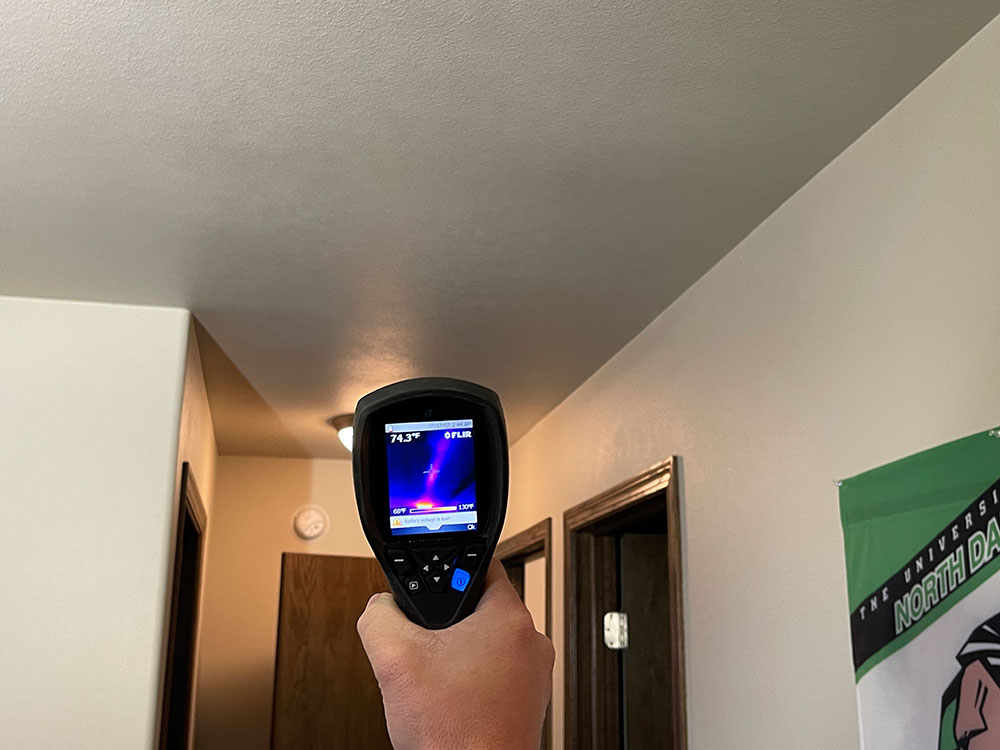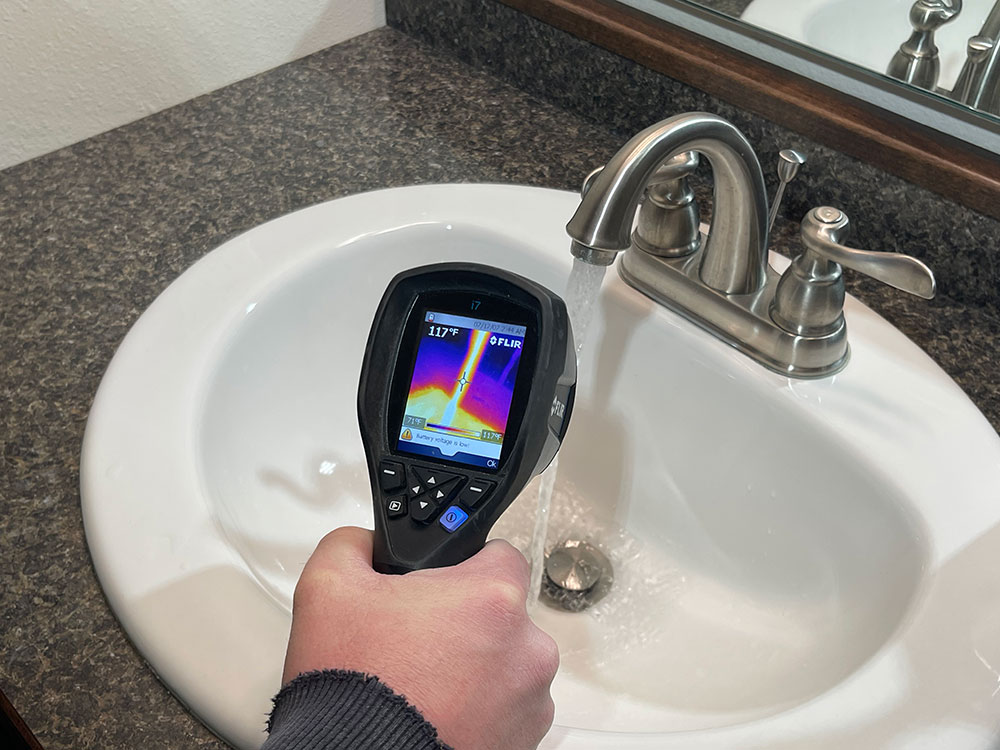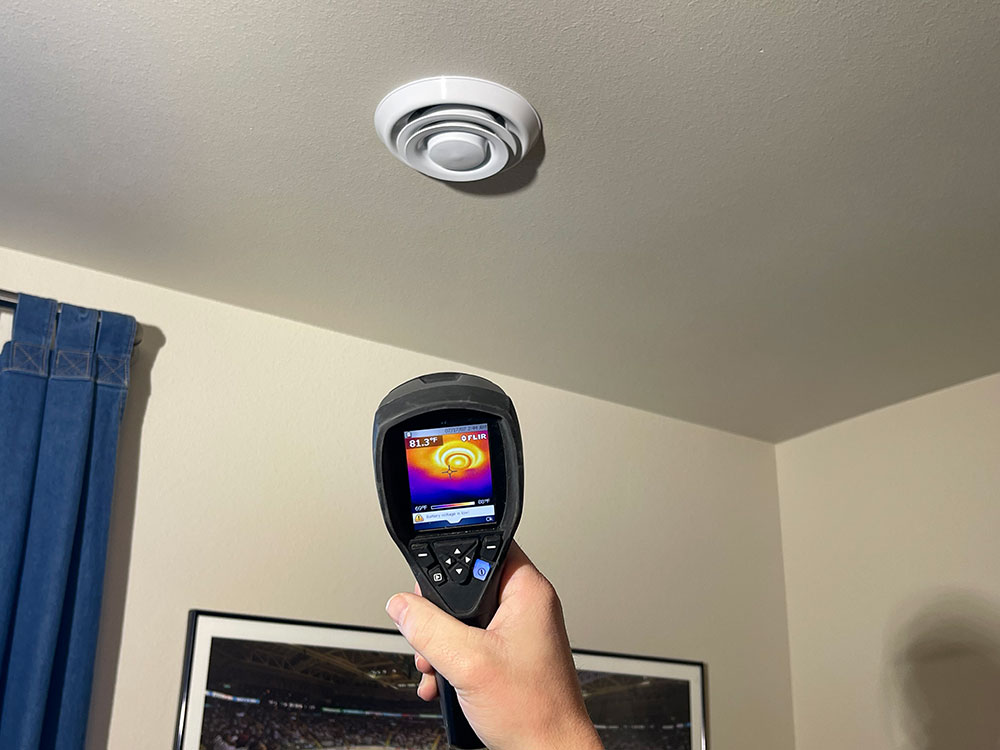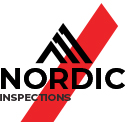Thermal imaging, also known as infrared thermography, is an advanced tool that enables us to identify temperature variations in building materials, uncovering potential issues that might escape visual detection. By choosing Nordic Inspections, you are opting for a complimentary thermal imaging scan that goes beyond industry standards.
Here’s a glimpse into how Nordic Inspections incorporates thermal imaging for a more comprehensive assessment:
Detecting Moisture Intrusion:
Thermal imaging can identify temperature differences caused by moisture or water leaks. Wet areas typically retain heat differently than dry areas, making it possible to pinpoint hidden leaks or areas of moisture intrusion within walls, ceilings, or floors.
Identifying Electrical Issues:
Overheating electrical components often emit heat. Thermal imaging can reveal abnormal temperature patterns in electrical panels, outlets, or wiring, helping inspectors identify potential electrical hazards such as overloaded circuits or faulty connections.
Spotting Insulation Gaps:
Thermal imaging is effective in identifying areas with insufficient insulation. Temperature variations on walls and ceilings can indicate gaps or missing insulation, leading to energy inefficiency and increased heating or cooling costs.
Locating Air Leaks:
Thermal imaging can be used to identify air leaks around windows, doors, and other openings in the building envelope. This helps homeowners improve energy efficiency by addressing areas where conditioned air may be escaping and outside air infiltrating.
Checking HVAC Systems:
Thermal imaging can be used to assess the performance of heating, ventilation, and air conditioning (HVAC) systems. This includes identifying issues such as blocked air ducts, uneven heating or cooling, and potential problems with the equipment.
Evaluating Plumbing Systems:
Thermal imaging can be used to identify issues with plumbing systems, including hidden leaks in pipes behind walls or under floors. The temperature differences caused by water leaks are often detectable through thermal imaging.
Documenting Findings:
We typically use thermal imaging cameras to capture images during the inspection. These images serve as visual documentation of their findings and can be included in the inspection report for the client’s reference.
It’s important to note that while thermal imaging is a powerful tool, it is not a substitute for traditional home inspection methods. We still rely on our expertise and visual assessments, and thermal imaging is used as a complementary technology to enhance the thoroughness of the inspection process. Home inspectors with thermal imaging capabilities can provide more comprehensive and insightful reports, aiding homeowners in making informed decisions about their properties.


While thermal imaging is a valuable tool for home inspectors, it’s important to be aware of its limitations to ensure a balanced and accurate assessment. Here are some limitations that home inspectors may face when using thermal imaging during inspections:
Surface Temperature vs. Internal Conditions:
Thermal imaging detects surface temperatures, and interpreting these readings requires expertise. It does not provide direct insight into internal conditions, and anomalies on the surface may not necessarily indicate underlying issues.
Weather Conditions:
External weather conditions can influence thermal imaging results. Rain, wind, or direct sunlight can affect the accuracy of the readings, making it challenging to obtain consistent and reliable data.
Time of Day:
Thermal imaging is most effective when there is a temperature contrast between the interior and exterior of the building. Inspections conducted during extreme temperatures, such as very hot or very cold days, may yield less conclusive results.
Material Composition:
The effectiveness of thermal imaging can be influenced by the material composition of surfaces. Some materials, like reflective or shiny surfaces, may not emit accurate thermal signatures, leading to potential misinterpretations.
Limited Depth Perception:
Thermal imaging primarily captures surface temperatures and has limitations in assessing the depth of potential issues. Inspectors may need to use complementary methods to fully understand the extent of a problem.
Hidden Obstructions:
Thermal imaging may not penetrate through certain materials or obstructions. For example, it may not accurately depict temperature variations behind thick walls, insulation, or other barriers.
Electrical Limitations:
While thermal imaging is useful for detecting abnormal heat patterns in electrical components, it doesn’t diagnose the specific cause of the issue. Additional electrical testing and inspection may be necessary for a comprehensive evaluation.
False Positives and Negatives:
Thermal imaging may produce false positives (indicating an issue that doesn’t exist) or false negatives (missing an actual issue). Inspectors need to corroborate thermal findings with other inspection methods for a more accurate assessment.


Despite these limitations, when used by trained professionals, thermal imaging remains a valuable tool in a home inspector’s arsenal. It can reveal hidden issues and provide additional insights that enhance the overall inspection process. It’s crucial for inspectors to use thermal imaging judiciously and in conjunction with other inspection techniques to ensure a comprehensive evaluation of a property’s condition.
